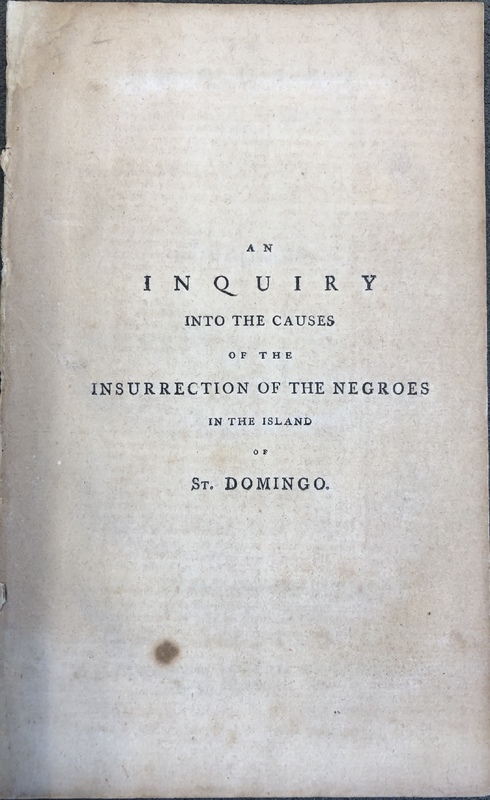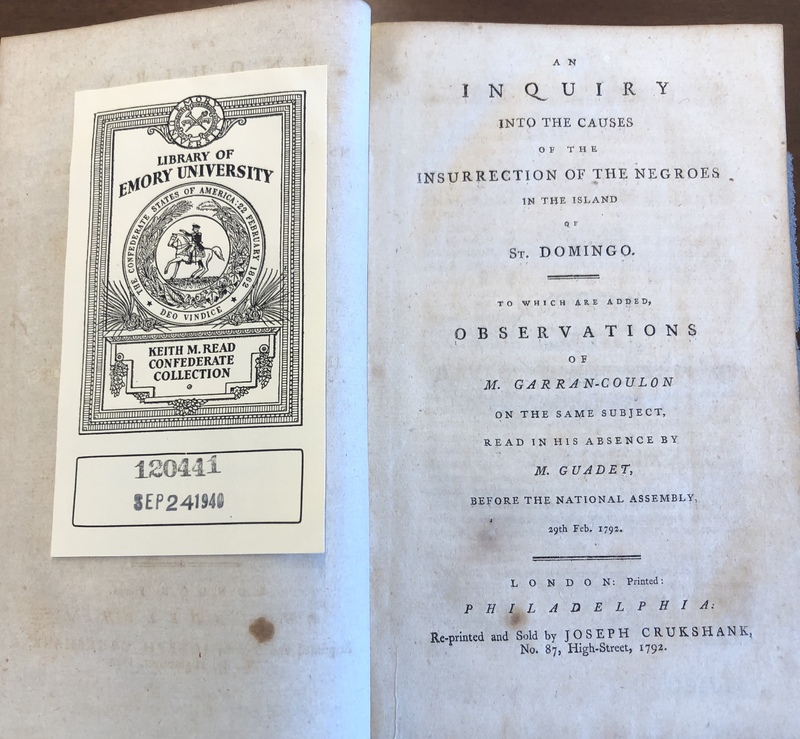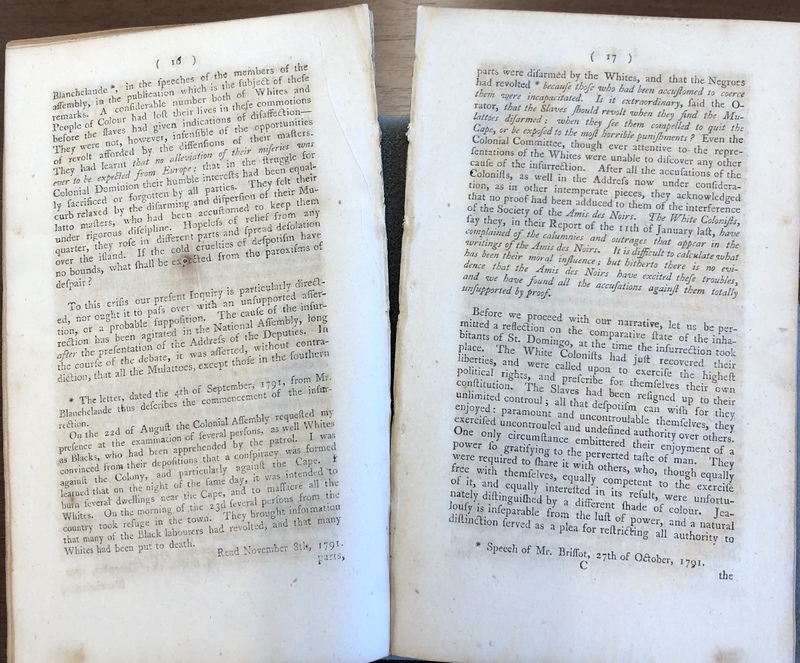An Inquiry into the Causes of the Insurrection of the Negroes in the Island of St. Domingo to Which Are Added, Observations of M. Garran-Coulon on the Same Subject, Read in His Absence by M. Guadet, before the National Assembly, 29th Feb. 1792
This political pamphlet by the French National Assembly might have been part of a larger work at some point since it has torn edges and no hard cover. The work has been translated into English by a British publisher. It is unclear why it would be reprinted in English as Saint Domingue was a political issue for the French to handle.
Despite the use of English, the pamphlet was hard to read because of the divergent spellings from modern English. Some words had too many letters, and there were unrecognizable words compared to modern English. Since the British were watching revolutionary movements in France, they might have found it helpful to translate French political documents to know just exactly when to strike in the Caribbean. Therefore, this particular version could have been intended for a British audience.
This pamphlet has potential educational purposes for both the British and French. Some historical literature shows that the British were aware of the resistance on the island and were wary of how the inhabitants of Saint Domingue would affect their territories (The English Historical Review 96). Johnson would have been reprinting warnings for Britain as a colonial power that was particularly relevant to Jamaica as Haiti’s neighbor. Having the pamphlet in English allowed for anticipation of dire consequences that spread throughout the Caribbean.
This pamphlet represents the complexity of unstable colonization coinciding with domestic political turmoil—a revolution within a revolution on the horizon. Despite France being on the verge of their own revolution, some politicians were concerned about their assets abroad. All reflections on the events on Saint Domingue framed the white colonists as being in danger. Saint Domingue was feared and revered at the same time because of the mobilizing power of the people and the importance of the island’s exports. French politicians urged careful considerations for how to control the slaves since previous decrees took a long time to reach the island and past decrees had not been uniformly followed (The French Slave Trade in the Eighteenth Century: An Old Regime Business). Politicians were also concerned about how the insurrection would impact for national prestige, noting how difficult print was to control.There is also a section dedicated to understanding the causes behind the slaves’ actions. Yet, none of the commentary reflected hard facts, creating underlying tone of uncertainty. Still, the National Assembly ends the pamphlet with a decree giving “the People of Colour and Free Negroes” political rights. The international response is well documented. The French Revolutionary government was clearly under immense pressure from free people of color to grant equal rights to become free French citizens. Ideological debates ensued, and the insurrection of St. Domingue became a full revolution. The National Assembly tries to grapple with this predicted future through this pamphlet that champions policy against the loss of a colony.
-Imani Brooks
Geggus, David. "The British Government and the Saint Domingue Slave Revolt, 1791-1793." The English Historical Review 96, no. 379 (1981): 285-305. http://www.jstor.org/stable/568291.
Stein, Robert Louis. The French Slave Trade in the Eighteenth Century : An Old Regime Business. Madison: University of Wisconsin Press, 1979.


